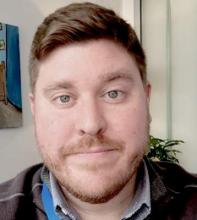It Gets Better turned 5 years old in 2015. It’s an organization and a project that has connected with LGBTQ youth through the Internet in the form of videos recorded mostly by celebrities and politicians. The organization started by Dan Savage and Terry Miller went so far to have President Obama featured in a video back in 2010.
The videos are short messages aimed at reaching LGBTQ (lesbian/gay/bisexual/transgender/questioning) youth who would otherwise be isolated from elders and mentors. It allows a mature queer community to communicate to these youths in their rural towns and provide hope that life will improve over time. It’s somewhat disturbing to wonder why such a project is necessary, but a quick review of some of the facts will underscore why messages like these are essential.
As stated by the Centers for Disease Control and Prevention, suicide is the second-leading cause of death of youths aged 10-24 years. As prevalent as that is, an LGB youth is four times as likely to attempt suicide. Being an LGB youth of color further increases that risk, and among those who identify as transgender, as many as 25% report having made a suicide attempt. These mental health disparities are not a result of an endemic characteristic of an LGBTQ youth but rather are tied to society’s lack of understanding and support of them.
A project like It Gets Better goes a long way in repairing society’s failure to provide basic support to a community that is impoverished when it comes to receiving empathy. Most of the country lacks mental health treatment that is knowledgeable about the LGBTQ community. The majority of the country also lacks access to a queer community, specifically in that there are no LGBT centers or organizations to provide a safe space to these youths to ask questions, learn, bond with each other, and grow into adults with strong self-esteem.
The population of the United States is just over 300 million, and about 5% of those people identify as LGBTQ in some form. That’s 9 million people who are or grew up as LGBTQ youths ... who were likely isolated, confused, and shamed for who they are. For one of these youths to watch a video – either with the U.S. president or another famous figure they look up to – speak to them, it can potentially provide them that small amount of hope that would be needed to see them through whatever challenges that might be before them.
Anyone can help a cause like this. If you are a mental health provider, educate yourself with the facts of the LGBTQ community and learn how to provide affirming therapy to a range of sexual orientations and gender identities. Organizations such as AGLP: The Association of LGBTQ Psychiatrists provide educational materials and give presentations to train clinicians on basic LGBTQ needs.
If you aren’t a mental health care provider, simply providing a caring ear and unconditional acceptance to a young person goes a long way. An adolescent in the straight community already has enough trouble with puberty, emotions, and feeling left out. An LGBTQ youth has these feelings amplified. We should all do our duty to let them know they belong to something larger than themselves and that we are happy to have them around.
Dr. Yarbrough is president of the AGLP: The Association of LGBTQ Psychiatrists. He works as director of psychiatry at Callen-Lorde Community Health Center, New York.


